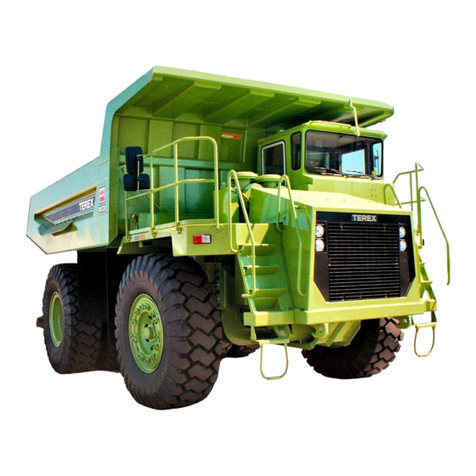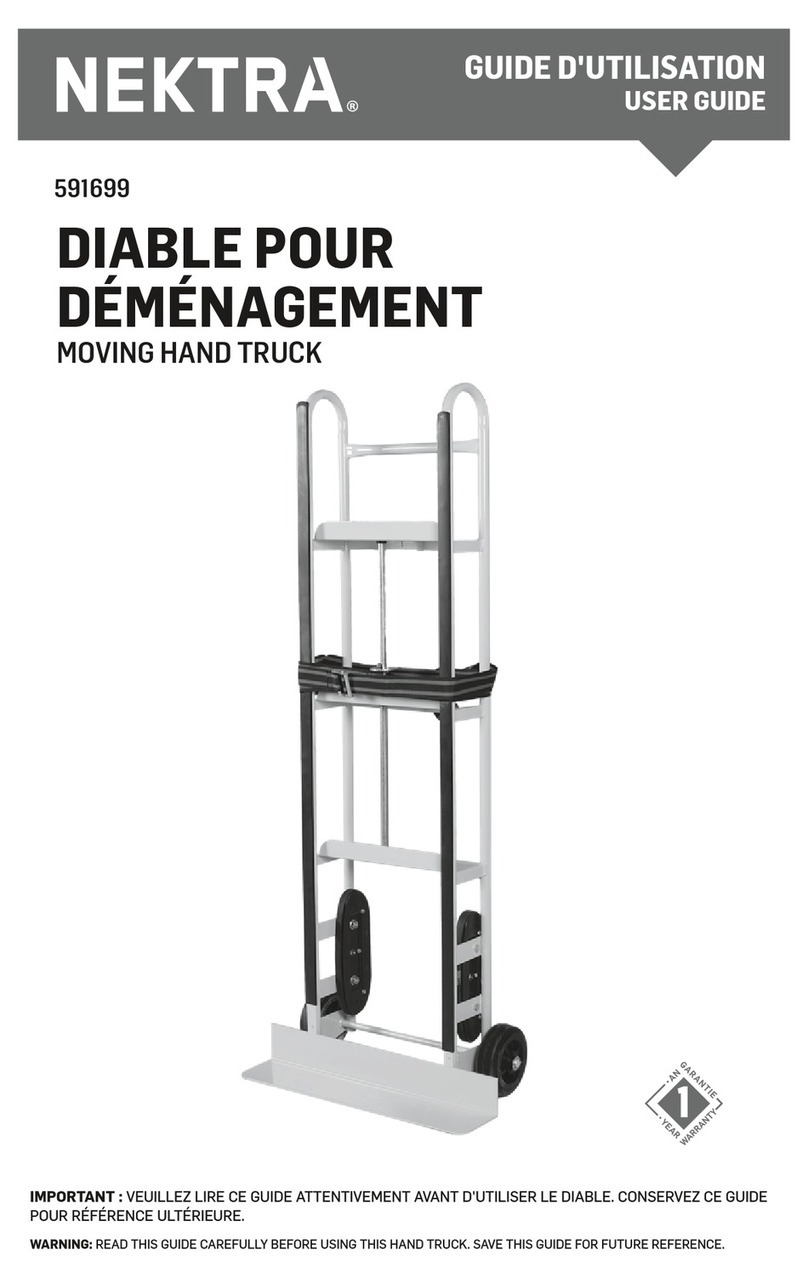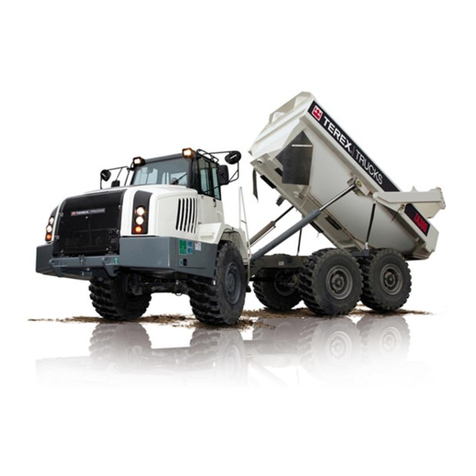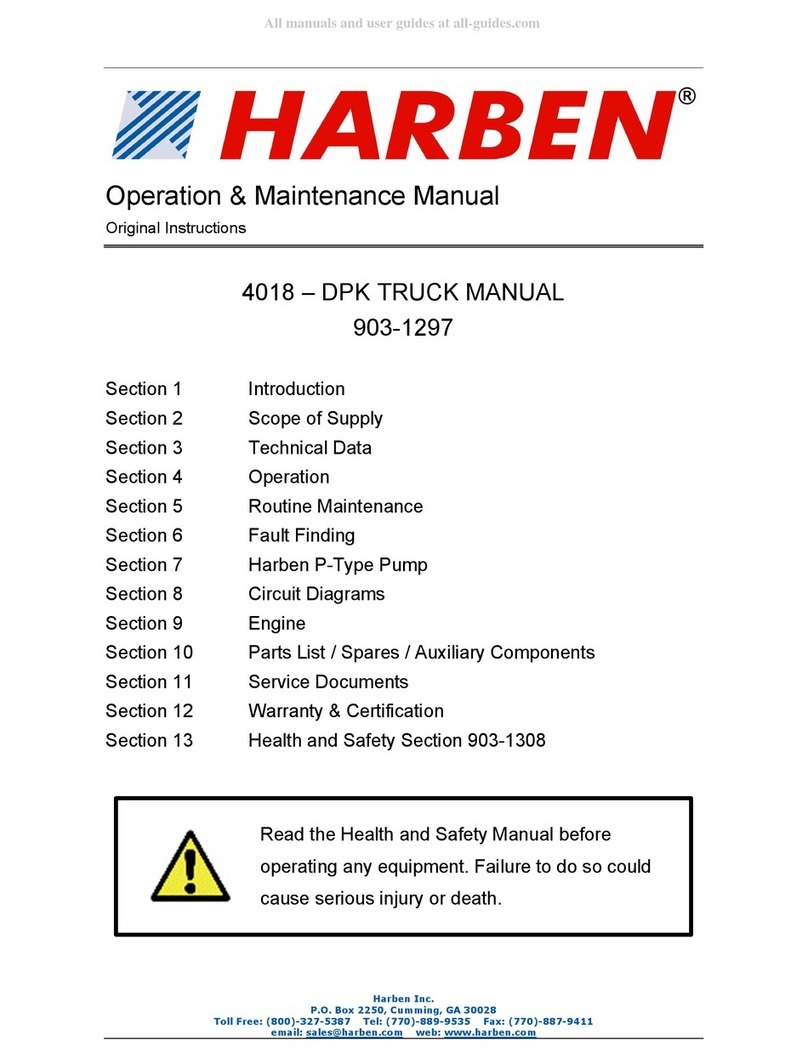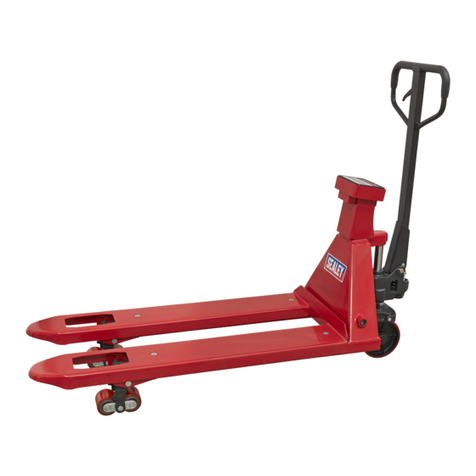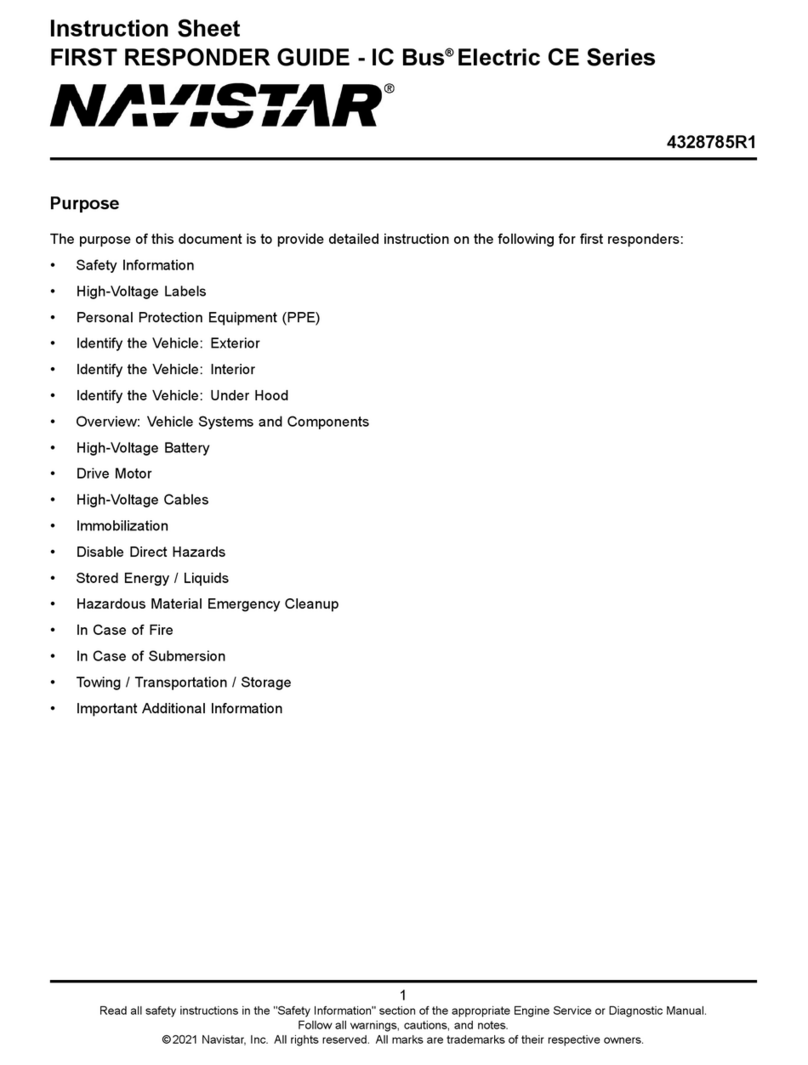Power Wheels PW200 User manual

Power Wheels
PW200
IMPORTANT
READ ENTIRE MANUAL BEFORE
INSTALLING AND OPERATING YOUR
POWER WHEELS

Introduction
Congratulation on your purchase of Power Wheels! Please read this manual thoroughly to
become familiar with safe maintenance and operation of this unit. If you have any questions
regarding your Power Wheels please do not hesitate to contact our customer service at
6 Month Limited Warranty
Powered Hand Truck Solutions products have a six (6) month warranty from the date of
purchase against defects in material and workmanship. Any component or part returned to the
factory or service center, freight prepaid by the owner, will be examined to determine if
defective parts are from improper workmanship. If parts are defective for workmanship or
factory Powered Hand Truck Solutions will repair or replace without charge and returned to
the owner freight prepaid by Powered Hand Truck Solutions.
All warranty claims should be called in to (800) 920-8066. You can also e-mail:
Any modifications or alterations made to Power Wheels by the user void all warranties.
Any alterations of Powered Hand Truck Solutions products will void liability or warranty on the
part of Powered Hand Truck Solutions.
Warranty exclusions are:
- Damage due to abuse
- Damage resulting for over loading.
- Normal wear and tear on parts
- Modifications to Power Wheels.

Warnings
- Read and understand this manual before using Power Wheels
- Do not transport unstable or loosely stacked loads.
- Do not ride on or transport passengers.
- Avoid high speeds and making turns while traveling on slopes.
- Do not stand, sit or climb on hand truck, or use hand truck to move personnel.
- Do not exceed the load capacity of your hand truck.
- Always make sure the Power Wheels path is clear of persons and hazards during use.
- Always operate Power Wheels at safe speeds depending on operating conditions.
- Always load and unload with Power Wheels on a level surface.
- Never operate Power Wheels in water over 1/2" in depth or submerse the electronics in
water or other liquids.
- Do not use unauthorized Power Wheels replacement parts.
- Moving the Freewheel Lever to the "free" position will also disengage the
electromechanical park brake and allow the hand truck to roll.
- Power Wheels is equipped with a fail-safe electromechanical parking brake. Any
interruption in the power supply will cause the brake to immediately engage and stop the
hand truck. An unanticipated stop could pitch an ill-positioned load forward and off the cart.
- Do not connect accessories to the battery.
- Batteries contain sulfuric acid, which can burn eyes, skin, clothes, etc. Always wear gloves
when working with batteries. If contact occurs, flush immediately with water and get medical
attention.
- Always use battery chargers supplied by Powered Hand Truck Solutions. Other battery
chargers could damage your batteries.
- Only authorized technicians should service your Power Wheels.
IMPORTANT!
Power Wheels may be used in the upright (2 wheel) or platform (4 wheel) position. It is
recommended that Power Wheels is used in the platform position because it doesn't
require the user to balance the load while controlling the speed. Power Wheels is not
designed to climb stairs. Attempting to climb stairs can result in serious injury.
It is strongly recommended that the user gets familiarized with the operation of
Power Wheels without a load in a safe area. When the throttle lever is pushed power
is applied to the wheels. Power Wheels will begin to slowly accelerate until it reaches the
speed matching the throttle lever position. The speed will very depending of the position
of the throttle.
Do not use extension cords to plug in your charger. Plug the charger directly into a properly
grounded standard wall outlet. Do not remove the grounding prong or it could result in
personal injury or property damage.

Installation
Power Wheels is designed to be installed on your existing convertible hand truck. Please follow
these instructions to properly install your Power Wheels drive unit.
1. Place your hand truck horizontally on a flat surface
and remove the two cotter keys. This will allow you
to remove the tires and bearing from the hand truck
axle.
2. Remove the (4) 5/16" axle bolts.
3. Release the air for the tire.
4. Remove the 4 nuts and bearing from the rim.
∂

5. Place the tire on a flat surface with the valve stem
pointing down and insert the transaxle hub in the
center of the wheel hub.
6. Attach the transaxle hub to the wheel hub using
(4) 1/4-20" x 3/4" bolts, washers and nuts.
7. Inflate tires to indicated rating on side of tire.
Generally this is 50 U.S. pounds on quality tires,
40 pounds on lower grade tires.

8. Place the transaxle / motor on the frame
and insert the (4) 5/16" x 2" bolts. Install the lock nuts
and tighten.
9. Unlatch the latch bar and push forward to make
clearance for battery box installation.
10. Place the battery box on the frame and align the
mounting hole to the holes located on hand truck
frame.
11. Insert two 1/4-20" x 1 1/4" bolts in the battery
box mounting holes closest to the transaxle /
motor. Insert two 1/4-20" x 1" bolts in the top
battery box holes. Attach the locking nuts to the
bolts and tighten.

12. Attach the wheels to the transaxle.
13. Insert the keyway into each hub.
14. Insert the hub bolt and tighten using a 6 mm
allen wrench.

15. Place the top controller with to of the hand
truck. Make to to go under the locking bar.
16. Remove nut on the locking bar and connect the controller wire clamp.
17. Remove nut on the handle bar and connect the controller wire clamp.
18. Attach the controller wire to the upper frame using
the self-tapper screw.

19. Remove the 2 screws holding the top controller
together.
20. Feed the controller box through the cross
support bar.
21. Drill 2 (1/4-20) holes on top of handle.
Holes should be drilled 2 1/4" apart.
22. Attach and alien top controller.

Change Batteries
1. Remove the two controller wiring clamps.
2. Remove the 4 battery box mounting bolts.
3. Slide the battery box forward. Gently pull on the
smaller electric brake wire to remove it from the
battery box. Pull about 6 inches of motor and
brake wire from the battery box. This will give you
enough wire length to remove the battery box.

-+
-+
12v 12Ah
12v 12Ah
4. Rotate the battery box toward the electric brake
unit the battery cover is facing you.
5. Remove the 6 screws and battery box cover .
6. Disconnect the top battery wires. Remove the
top battery. Disconnect the bottom battery.
Remove bottom battery. Install new bottom
battery and connect the Black wire to the Negative
(-) terminal. Attach the Yellow series jumper wire
to the Positive (+) terminal. Attach the Yellow
series jumper wire to the Negative (-) terminal on
the second battery. Attach the Red wire to the
Positive (+) Terminal on the second battery.

7. Attach the battery box cover. Make sure the
rubber battery supports on battery side.
8. Install the 6 batter box cover screws.
9. Rotate the battery box and place it on the frame
of the hand truck.

10. Insert the electric brake wire connector into
the battery box. Insert the motor and brake wire
into the battery box while sliding the battery box
toward the motor and transaxle.
11. Align the battery box mounting holes.
Attach the 4 battery box mounting bolts.

12. Attach the controller wire clamps.

User Controls
Throttle Lever (Fig. 1)
- Depressing the Left side will cause Power Wheels to move in reverse.
- Depressing the Right side will cause Power Wheels to move forward.
- The throttle lever is variable speed. The further you move the throttle lever, the faster
Power Wheels will travel.
(Fig. 1)
Reverse Forward
OPERATION INSTRUCTIONS
On / Off Push Button - The On / Off power button is located on the bottom of the battery box. When
Power Wheels is On the Digital Voltmeter displays the battery voltage. When Power Wheels is Off
the Digital Voltmeter will display no voltage. Fig 2
Fast / Slow Speed Control - The Fast / Slow speed control allows the user to adjust the maximum
speed that Power Wheels will travel when the Throttle Lever is depressed to its fullest. Turn the Fast
/ Slow knob clockwise to decrease the maximum speed. Turn the Fast / Slow knob counterclockwise
to increase the maximum speed. Fig 2
Using Your Power Wheels
It is recommended you get comfortable operating the hand truck with and without a load. Care
should be taken with a load to become comfortable and aware of how the weight responds to
acceleration, deceleration, slopes and turning corners.
Extra stopping distance is required with a load. This is noticeably different than operation with an
empty hand truck and especially true when operating in higher speeds. Power Wheels should always
be operated under controlled speed when going down or up slopes such as inclines and slippery
surfaces.

(Fig. 2)
On / Off
Push Button
Circuit Breaker
Fast / Slow
Speed Control
Digital Voltmeter
Charging Port
(Fig. 3)
Circuit Breaker - The circuit breaker protect the electronics when under a heavy load. If the circuit
breaker trips, press the reset button which is located on the circuit breaker. Fig 2
Motor / Brake Connector - The Motor / Brake connector connects the motor and brake to the
battery box. Fig 2
Digital Voltmeter - The digital voltmeter is located on the right side of Power Wheels battery box.
The digital voltmeter reads DC voltage ranging from 12V to 40V. A typical charge will be at
maximum capacity around 28 volts. If voltage is below 20V then Power Wheels will not operate
properly.
Charging Port - To charge the battery with AC charger, plug cord into battery, plug cord into outlet.
The charger is fully automatic and will turn on automatically. A fully drained battery may need up to
6 hours to recharge fully.

Freewheel Lever
(Fig. 4)
Freewheel Lever - This lever determines whether the wheels are engaged with the transaxle. When
Power Wheel is turned Off you can disengage the freewheel lever and freely move the hand truck.
To disengage the transaxle, move the freewheel lever forward (toward the frame of the hand truck).
To engage the transaxle, pull the freewheel lever backwards (away from the frame of the hand
truck). Do not disengage the freewheel lever with Power Wheels on a slope or incline. Fig 4
Using Power Wheels on Truck Ramps
Using Power Wheels on portable truck or self-contained ramps requires extra care and caution.
Power Wheels is capable of climbing most ramps used in these applications which ma result in
damaged to Power Wheels, damaged product, and/or an operator injury. Power Wheels is also
capable of carrying loads excess of most ramps rated capacities. Underrated ramps may fail
resulting in damaged product, damaged equipment, and the possibility for personal injury. Ramps
must be securely and correctly attached to the truck or trailer body. If the transition between ramp
and trailer isn't smooth then it may cause the operator to lose control or Power Wheels to perform
improperly.
Ramp use requires special attention to the operating environment. Inclement foreign and weather
substances on the ramp may affect the performance and ability to operate safely. This is especially
true in convenience stores and restaurant deliveries where a potential exists of substances being
transformed to the ramp surface.
Battery Life
The battery life will be diminished when used to climb ramps fully loaded. The additional current
draw will affect overall battery life. Power Wheels is powered by two 12 volt batteries. The motor
draws current from the batteries based on the amount of effort required to meet the condition at
hand. The battery life is determined by the distance traveled, the load carried and the incline
encountered. Batter life decreases proportionally to the work performed.

Specifications:
Weight Capacity 600 lb. (2 wheel) 1200 lb. (4 wheel)
Battery 24 Volt Lithium Iron
Battery Charger 24 Volt
Controller 110 Amp P&G
Motor 700 watt
Transaxle 32:1
Meter Battery Gauge
ON/OFF Push Button
Parking Brake Electronic
Ground Clearance 4”
Tires 2 Hubs
Range Per Charge Up To 4 Miles
Operating Position 2-Wheel / 4-Wheel Position
Maximum Incline 18 Degrees
Maximum Speed 0 - 3 MPH
Base Weight 40 lb.
Battery Charger
Use Powered Hand Truck Solutions AC charger (110V domestic or 230V international outlet) to
charge the battery. Plug cord into wall outlet, plug battery charger connector into battery box. The
battery charger will automatically turn On. A solid red light indicates the power is On and will remain
illuminated while the charger is plugged in to the batter and wall outlet. The other LED light will
illuminate to indicate one of the following:
- Solid red - power is On. Solid red indicator will remain on while the charger is plugged in.
- Solid yellow - Battery is charging.
- Solid green - battery has fully charged and is ready to be unplugged and used.
Tool List
The following tools may be needed to service or install you Power Wheels drive unit:
- #1 Phillips Screwdriver - Pliers
- Short #2 Phillips screwdriver - 1/2" open end wrench
- #3 Phillips screwdriver - Large flat screwdriver
- SAE Hex wrench set - #2 square drive screwdriver
- Metric hex wrench set - Metric socket wrench set
- SAE socket wrench set - Metric allen wrench set

+
-
1 - Curtis Wig Wag WW-1
2 - Dynamic Rhino 160 amp controller
3 - Charging Port
4 - Batter Meter
5 - On / Off
6 - Speed Pot
7 - 50 Amp Breaker
8 - Electric Brake
9 - Motor / Transaxle
10 - 12v 12Ah Battery
1
2
3
4
5
6
7
8
9
10
10
Power Wheels - Wiring Diagram

10101
10103
10102
10104
10105
10106
10107
10108
10109
10110
10111
10112
Table of contents
Popular Truck manuals by other brands
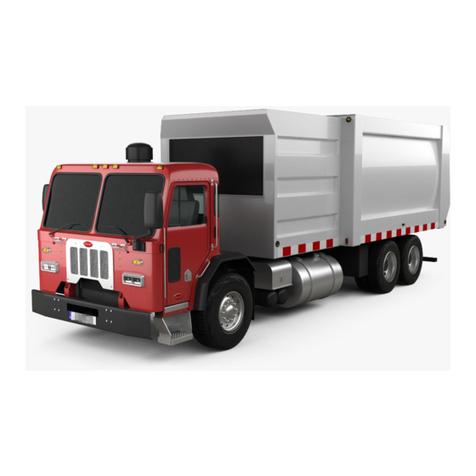
Peterbilt
Peterbilt 320 Operator's manual
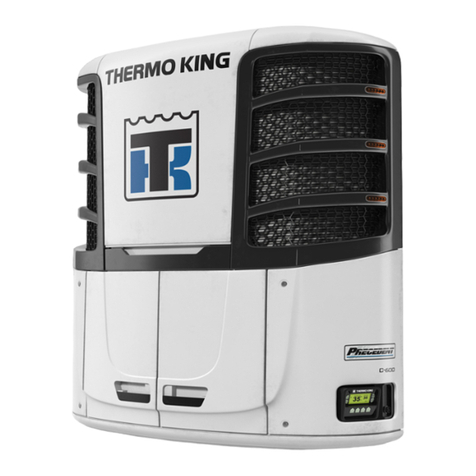
Thermo King
Thermo King Precedent C-600 Operator's manual
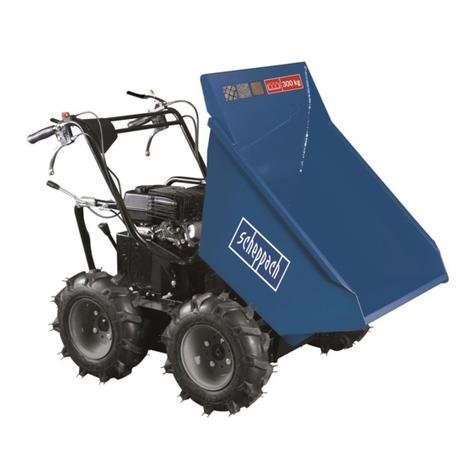
Scheppach
Scheppach DP3000 Translation from the original instruction manual
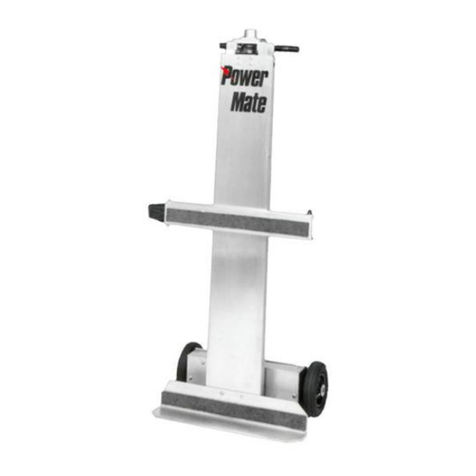
Powermate
Powermate Aluminum LE Series operating manual

Komatsu
Komatsu HD785-7 Shop Manual
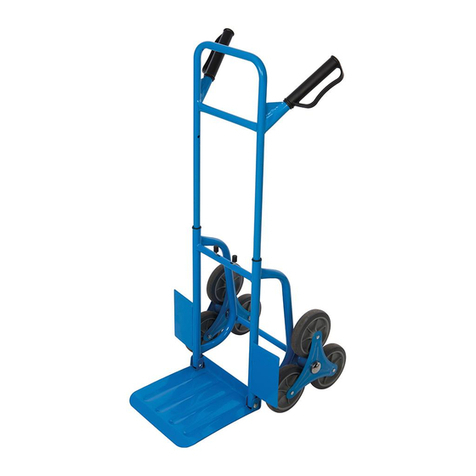
Silverline
Silverline 736265 quick start guide
